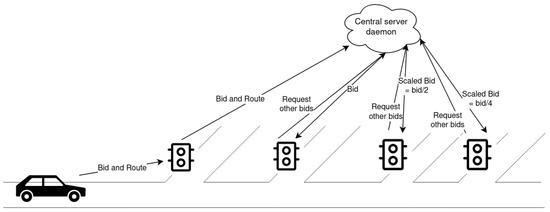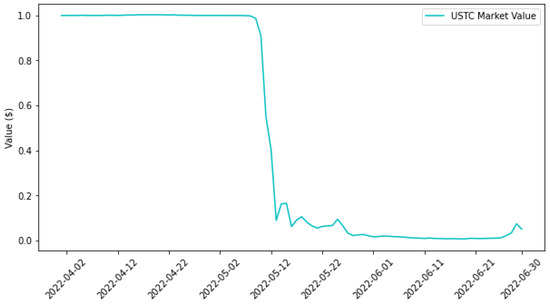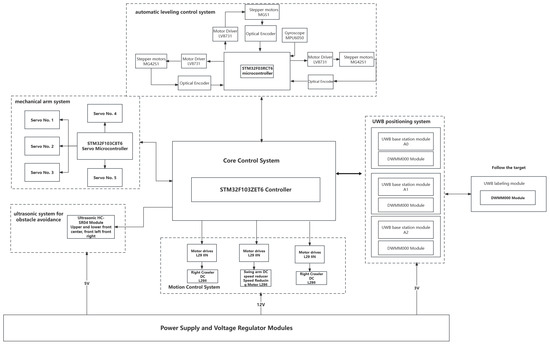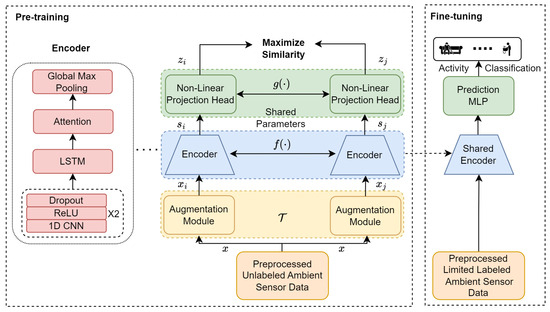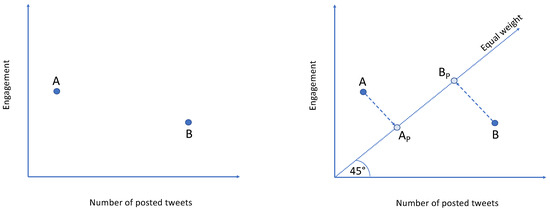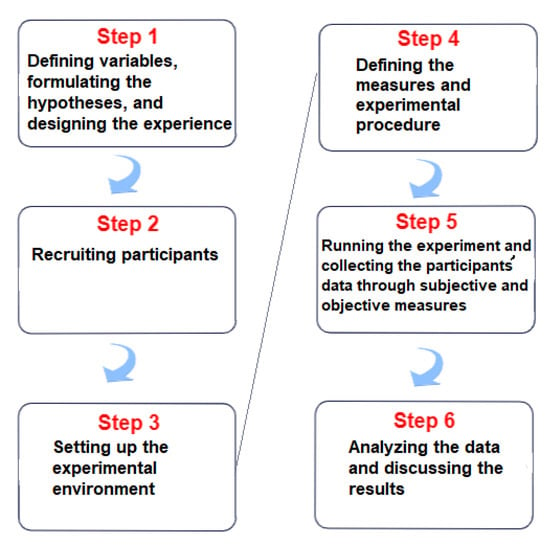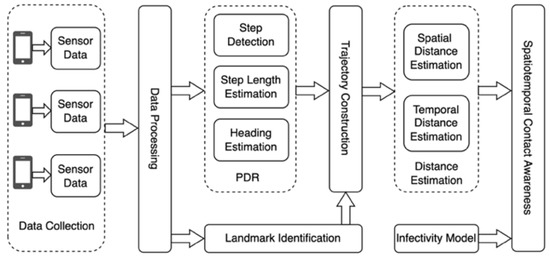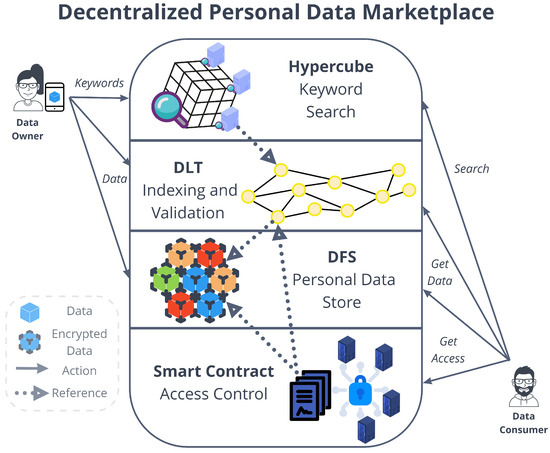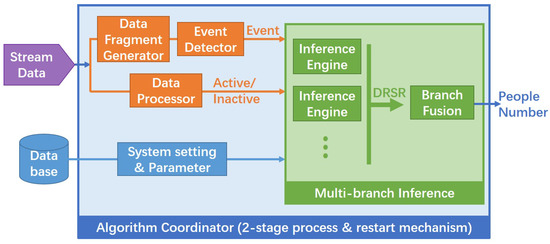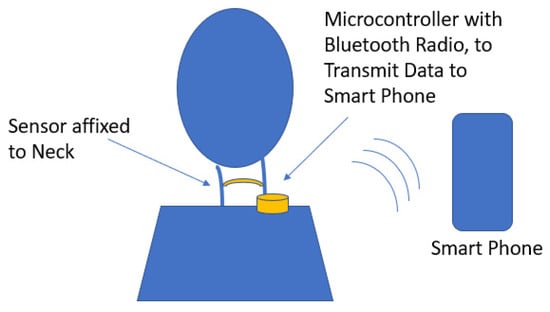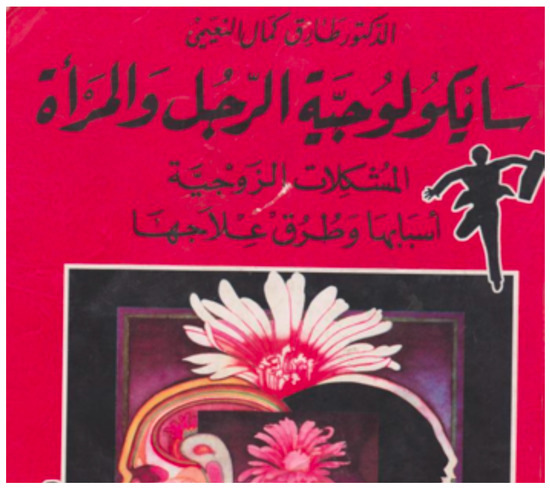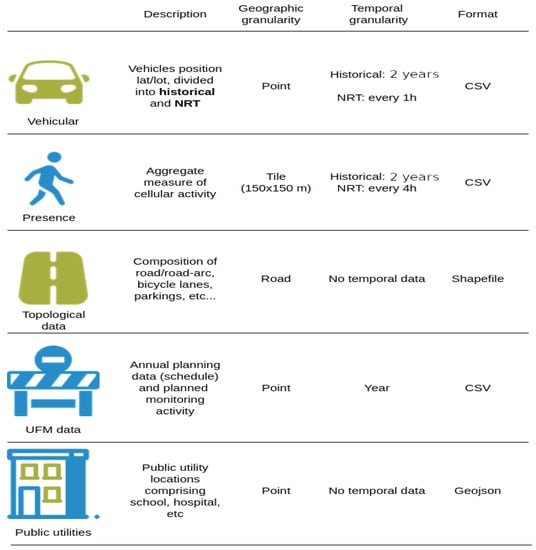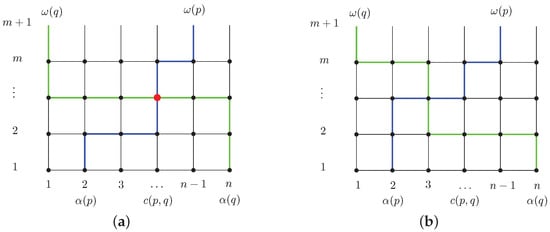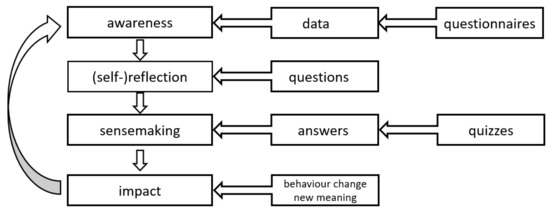Sensors and Communications for the Social Good
A topical collection in Sensors (ISSN 1424-8220). This collection belongs to the section "Communications".
Viewed by 80498
Printed Edition Available!
A printed edition of this Topical Collection is available
here.
Share This Topical Collection
Editors
 Prof. Dr. Ombretta Gaggi
Prof. Dr. Ombretta Gaggi
 Prof. Dr. Ombretta Gaggi
Prof. Dr. Ombretta Gaggi
E-Mail
Website
Collection Editor
Department of Mathematics, University of Padua, Via Trieste, 35131 Padova, Italy
Interests: multimedia document and application design; mobile-context-aware information systems; distributed multimedia modeling
 Prof. Dr. Pietro Manzoni
Prof. Dr. Pietro Manzoni
 Prof. Dr. Pietro Manzoni
Prof. Dr. Pietro Manzoni
E-Mail
Website
Collection Editor
Department of Computer Engineering (DISCA), Universitat Politècnica de València, 46022 Valencia, Spain
Interests: mobile networks and systems; Internet of Things (IoT); edge–cloud communication; low-power network
Special Issues, Collections and Topics in MDPI journals
Topical Collection Information
Dear Colleagues,
This Topical Collection focuses on the application of IT technologies to social good. Social good is typically defined as an action that provides some sort of benefit to the general public. In this case, internet connection, education, and healthcare are all good examples of social goods. However, new media innovations and the explosion of online communities have added new meaning to the term. Social good is now about global citizens uniting to unlock the potential of individuals, technology, and collaboration to create a positive societal impact.
Prof. Dr. Claudio Palazzi
Prof. Dr. Ombretta Gaggi
Prof. Dr. Pietro Manzoni
Collection Editors
Manuscript Submission Information
Manuscripts should be submitted online at www.mdpi.com by registering and logging in to this website. Once you are registered, click here to go to the submission form. Manuscripts can be submitted until the deadline. All submissions that pass pre-check are peer-reviewed. Accepted papers will be published continuously in the journal (as soon as accepted) and will be listed together on the collection website. Research articles, review articles as well as short communications are invited. For planned papers, a title and short abstract (about 100 words) can be sent to the Editorial Office for announcement on this website.
Submitted manuscripts should not have been published previously, nor be under consideration for publication elsewhere (except conference proceedings papers). All manuscripts are thoroughly refereed through a single-blind peer-review process. A guide for authors and other relevant information for submission of manuscripts is available on the Instructions for Authors page. Sensors is an international peer-reviewed open access semimonthly journal published by MDPI.
Please visit the Instructions for Authors page before submitting a manuscript.
The Article Processing Charge (APC) for publication in this open access journal is 2600 CHF (Swiss Francs).
Submitted papers should be well formatted and use good English. Authors may use MDPI's
English editing service prior to publication or during author revisions.
Keywords
- IT for education
- data science
- health and social care
- citizen science
- decentralized approaches to IT
- frugal solutions for IT
- IT for smart living
Published Papers (17 papers)
Open AccessArticle
Exploiting Traffic Light Coordination and Auctions for Intersection and Emergency Vehicle Management in a Smart City Mixed Scenario
by
Filippo Muzzini and Manuela Montangero
Cited by 8 | Viewed by 2352
Abstract
IoT (Internet-of-Things)-powered devices can be exploited to connect vehicles to smart city infrastructure, allowing vehicles to share their intentions while retrieving contextual information about diverse aspects of urban viability. In this paper, we place ourselves in a transient scenario in which next-generation vehicles
[...] Read more.
IoT (Internet-of-Things)-powered devices can be exploited to connect vehicles to smart city infrastructure, allowing vehicles to share their intentions while retrieving contextual information about diverse aspects of urban viability. In this paper, we place ourselves in a transient scenario in which next-generation vehicles that are able to communicate with the surrounding infrastructure coexist with traditional vehicles with limited or absent IoT capabilities. We focus on intersection management, in particular on reusing existing traffic lights empowered by a new management system. We propose an auction-based system in which traffic lights are able to exchange contextual information with vehicles and other nearby traffic lights with the aim of reducing average waiting times at intersections and consequently overall trip times. We use bid propagation to improve standard vehicle trip times while allowing emergency vehicles to free up the way ahead without needing ad hoc system for such vehicle, only an increase in their budget. The proposed system is then tested against two baselines: the classical Fixed Time Control system currently adopted for traffic lights, and an auction strategy that does not exploit traffic light coordination. We performed a large set of experiments using the well known MATSim transport simulator on both a synthetic Manhattan map and on a map we built of an urban area located in Modena, Northern Italy. Our results show that the proposed approach performs better than the classical fixed time control system and the auction strategy that does not exploit coordination among traffic lights.
Full article
►▼
Show Figures
Open AccessArticle
Cryptocurrency Turmoil: Unraveling the Collapse of a Unified Stablecoin (USTC) through Twitter as a Passive Sensor
by
Stefano Ferretti and Marco Furini
Cited by 5 | Viewed by 3975
Abstract
This study sought to explore whether Twitter, as a passive sensor, could have foreseen the collapse of the Unified Stablecoin (USTC). In May 2022, in just a few days, the cryptocurrency went to near-zero valuation. Analyzing 244,312 tweets from 89,449 distinct accounts between
[...] Read more.
This study sought to explore whether Twitter, as a passive sensor, could have foreseen the collapse of the Unified Stablecoin (USTC). In May 2022, in just a few days, the cryptocurrency went to near-zero valuation. Analyzing 244,312 tweets from 89,449 distinct accounts between April and June 2022, this study delved into the correlation between personal sentiments in tweets and the USTC market value, revealing a moderate correlation with polarity. While sentiment analysis has often been used to predict market prices, the results suggest the challenge of foreseeing sudden catastrophic events like the USTC collapse solely through sentiment analysis. The analysis uncovered unexpected global interest and noted positive sentiments during the collapse. Additionally, it identified events such as the launch of the new Terra blockchain (referred to as “Terra 2.0”) that triggered positive surges. Leveraging machine learning clustering techniques, this study also identified distinct user behaviors, providing valuable insights into influential figures in the cryptocurrency space. This comprehensive analysis marks an initial step toward understanding sudden and catastrophic phenomena in the cryptocurrency market.
Full article
►▼
Show Figures
Open AccessArticle
Automatic Tracking Based on Weighted Fusion Back Propagation in UWB for IoT Devices
by
Boliang Zhang, Lu Shen, Jiahua Yao, Tenglong Wang, Su-Kit Tang and Silvia Mirri
Cited by 4 | Viewed by 1817
Abstract
The global population is progressively entering an aging phase, with population aging likely to emerge as one of the most-significant social trends of the 21st Century, impacting nearly all societal domains. Addressing the challenge of assisting vulnerable groups such as the elderly and
[...] Read more.
The global population is progressively entering an aging phase, with population aging likely to emerge as one of the most-significant social trends of the 21st Century, impacting nearly all societal domains. Addressing the challenge of assisting vulnerable groups such as the elderly and disabled in carrying or transporting objects has become a critical issue in this field. We developed a mobile Internet of Things (IoT) device leveraging Ultra-Wideband (UWB) technology in this context. This research directly benefits vulnerable groups, including the elderly, disabled individuals, pregnant women, and children. Additionally, it provides valuable references for decision-makers, engineers, and researchers to address real-world challenges. The focus of this research is on implementing UWB technology for precise mobile IoT device localization and following, while integrating an autonomous following system, a robotic arm system, an ultrasonic obstacle-avoidance system, and an automatic leveling control system into a comprehensive experimental platform. To counteract the potential UWB signal fluctuations and high noise interference in complex environments, we propose a hybrid filtering-weighted fusion back propagation (HFWF-BP) neural network localization algorithm. This algorithm combines the characteristics of Gaussian, median, and mean filtering, utilizing a weighted fusion back propagation (WF-BP) neural network, and, ultimately, employs the Chan algorithm to achieve optimal estimation values. Through deployment and experimentation on the device, the proposed algorithm’s data preprocessing effectively eliminates errors under multi-factor interference, significantly enhancing the precision and anti-interference capabilities of the localization and following processes.
Full article
►▼
Show Figures
Open AccessArticle
Enhancing Human Activity Recognition in Smart Homes with Self-Supervised Learning and Self-Attention
by
Hui Chen, Charles Gouin-Vallerand, Kévin Bouchard, Sébastien Gaboury, Mélanie Couture, Nathalie Bier and Sylvain Giroux
Cited by 21 | Viewed by 5282
Abstract
Deep learning models have gained prominence in human activity recognition using ambient sensors, particularly for telemonitoring older adults’ daily activities in real-world scenarios. However, collecting large volumes of annotated sensor data presents a formidable challenge, given the time-consuming and costly nature of traditional
[...] Read more.
Deep learning models have gained prominence in human activity recognition using ambient sensors, particularly for telemonitoring older adults’ daily activities in real-world scenarios. However, collecting large volumes of annotated sensor data presents a formidable challenge, given the time-consuming and costly nature of traditional manual annotation methods, especially for extensive projects. In response to this challenge, we propose a novel AttCLHAR model rooted in the self-supervised learning framework SimCLR and augmented with a self-attention mechanism. This model is designed for human activity recognition utilizing ambient sensor data, tailored explicitly for scenarios with limited or no annotations. AttCLHAR encompasses unsupervised pre-training and fine-tuning phases, sharing a common encoder module with two convolutional layers and a long short-term memory (LSTM) layer. The output is further connected to a self-attention layer, allowing the model to selectively focus on different input sequence segments. The incorporation of sharpness-aware minimization (SAM) aims to enhance model generalization by penalizing loss sharpness. The pre-training phase focuses on learning representative features from abundant unlabeled data, capturing both spatial and temporal dependencies in the sensor data. It facilitates the extraction of informative features for subsequent fine-tuning tasks. We extensively evaluated the AttCLHAR model using three CASAS smart home datasets (Aruba-1, Aruba-2, and Milan). We compared its performance against the SimCLR framework, SimCLR with SAM, and SimCLR with the self-attention layer. The experimental results demonstrate the superior performance of our approach, especially in semi-supervised and transfer learning scenarios. It outperforms existing models, marking a significant advancement in using self-supervised learning to extract valuable insights from unlabeled ambient sensor data in real-world environments.
Full article
►▼
Show Figures
Open AccessArticle
X as a Passive Sensor to Identify Opinion Leaders: A Novel Method for Balancing Visibility and Community Engagement
by
Marco Furini
Cited by 3 | Viewed by 2546
Abstract
The identification of opinion leaders is a matter of great significance for companies and authorities, as these individuals are able to shape the opinions and attitudes of entire societies. In this paper, we consider X (formerly Twitter) as a passive sensor to identify
[...] Read more.
The identification of opinion leaders is a matter of great significance for companies and authorities, as these individuals are able to shape the opinions and attitudes of entire societies. In this paper, we consider X (formerly Twitter) as a passive sensor to identify opinion leaders. Given the unreliability of the traditional follower count metric due to the presence of fake accounts and farm bots, our approach combines the measures of visibility and community engagement to identify these influential individuals. Through an experimental evaluation involving approximately 4 million tweets, we showed two important findings: (i) relying solely on follower count or post frequency is inadequate for accurately identifying opinion leaders, (ii) opinion leaders are able to build community and gain visibility around specific themes. The results showed the benefits of using X as a passive sensor to identify opinion leaders, as the proposed method offers substantial advantages for those who are involved in social media communication strategies, including political campaigns, brand monitoring, and policymaking.
Full article
►▼
Show Figures
Open AccessEditorial
Sensors and Communications for the Social Good
by
Claudio Palazzi, Ombretta Gaggi and Pietro Manzoni
Viewed by 1675
Abstract
This topical collection focuses on applying sensors and communications technologies for social good [...]
Full article
Open AccessArticle
Effects of the Uncertainty of Interpersonal Communications on Behavioral Responses of the Participants in an Immersive Virtual Reality Experience: A Usability Study
by
Shirin Hajahmadi and Gustavo Marfia
Cited by 9 | Viewed by 4142
Abstract
Two common difficulties which people face in their daily lives are managing effective communication with others and dealing with what makes them feel uncertain. Past research highlights that the result of not being able to handle these difficulties influences people’s performance in the
[...] Read more.
Two common difficulties which people face in their daily lives are managing effective communication with others and dealing with what makes them feel uncertain. Past research highlights that the result of not being able to handle these difficulties influences people’s performance in the task at hand substantially, especially in the context of a social environment such as a workplace. Perceived uncertainty of information is a key influential factor in this regard, with effects on the quality of the information transfer between sender and receiver. Uncertainty of information can be induced into the communication system in three ways: when there is any kind of information deficit that makes the target message unclear for the receiver, when there are some requested changes that could not be predicted by the receiver, and when the content of the message is so interconnected and complex that it limits understanding. Since uncertainty is an inseparable feature of our lives, studying the effects that different levels of it have on individuals and how individuals nevertheless accomplish the tasks of daily living is of high importance. Modern technologies such as immersive virtual reality (VR) have been successful in providing effective platforms to support human behavioral and social well-being studies. In this paper, we suggest the design, development, and evaluation of an immersive VR serious game platform to study behavioral responses to the uncertain features of interpersonal communications. In addition, we report the result of a within-subject user study with 17 participants aged between 20 and 35 and their behavioral responses to two levels of uncertainty with subjective and objective measures. The results convey that the application successfully and meaningfully measured some behavioral responses related to exposure to different levels of uncertainty and overall, the participants were satisfied with the experience.
Full article
►▼
Show Figures
Open AccessArticle
Indoor Spatiotemporal Contact Analytics Using Landmark-Aided Pedestrian Dead Reckoning on Smartphones
by
Lulu Gao and Shin’ichi Konomi
Cited by 2 | Viewed by 2696
Abstract
Due to the prevalence of COVID-19, providing safe environments and reducing the risks of virus exposure play pivotal roles in our daily lives. Contact tracing is a well-established and widely-used approach to track and suppress the spread of viruses. Most digital contact tracing
[...] Read more.
Due to the prevalence of COVID-19, providing safe environments and reducing the risks of virus exposure play pivotal roles in our daily lives. Contact tracing is a well-established and widely-used approach to track and suppress the spread of viruses. Most digital contact tracing systems can detect direct face-to-face contact based on estimated proximity, without quantifying the exposed virus concentration. In particular, they rarely allow for quantitative analysis of indirect environmental exposure due to virus survival time in the air and constant airborne transmission. In this work, we propose an indoor spatiotemporal contact awareness framework (iSTCA), which explicitly considers the self-containing quantitative contact analytics approach with spatiotemporal information to provide accurate awareness of the virus quanta concentration in different origins at various times. Smartphone-based pedestrian dead reckoning (PDR) is employed to precisely detect the locations and trajectories for distance estimation and time assessment without the need to deploy extra infrastructure. The PDR technique we employ calibrates the accumulative error by identifying spatial landmarks automatically. We utilized a custom deep learning model composed of bidirectional long short-term memory (Bi-LSTM) and multi-head convolutional neural networks (CNNs) for extracting the local correlation and long-term dependency to recognize landmarks. By considering the spatial distance and time difference in an integrated manner, we can quantify the virus quanta concentration of the entire indoor environment at any time with all contributed virus particles. We conducted an extensive experiment based on practical scenarios to evaluate the performance of the proposed system, showing that the average positioning error is reduced to less than 0.7 m with high confidence and demonstrating the validity of our system for the virus quanta concentration quantification involving virus movement in a complex indoor environment.
Full article
►▼
Show Figures
Open AccessArticle
Decentralized Personal Data Marketplaces: How Participation in a DAO Can Support the Production of Citizen-Generated Data
by
Mirko Zichichi, Stefano Ferretti and Víctor Rodríguez-Doncel
Cited by 21 | Viewed by 6433
Abstract
Big Tech companies operating in a data-driven economy offer services that rely on their users’ personal data and usually store this personal information in “data silos” that prevent transparency about their use and opportunities for data sharing for public interest. In this paper,
[...] Read more.
Big Tech companies operating in a data-driven economy offer services that rely on their users’ personal data and usually store this personal information in “data silos” that prevent transparency about their use and opportunities for data sharing for public interest. In this paper, we present a solution that promotes the development of decentralized personal data marketplaces, exploiting the use of Distributed Ledger Technologies (DLTs), Decentralized File Storages (DFS) and smart contracts for storing personal data and managing access control in a decentralized way. Moreover, we focus on the issue of a lack of efficient decentralized mechanisms in DLTs and DFSs for querying a certain type of data. For this reason, we propose the use of a hypercube-structured Distributed Hash Table (DHT) on top of DLTs, organized for efficient processing of multiple keyword-based queries on the ledger data. We test our approach with the implementation of a use case regarding the creation of citizen-generated data based on direct participation and the involvement of a Decentralized Autonomous Organization (DAO). The performance evaluation demonstrates the viability of our approach for decentralized data searches, distributed authorization mechanisms and smart contract exploitation.
Full article
►▼
Show Figures
Open AccessArticle
A Multi-Resident Number Estimation Method for Smart Homes
by
Andrea Masciadri, Changhong Lin, Sara Comai and Fabio Salice
Cited by 8 | Viewed by 2798
Abstract
Population aging requires innovative solutions to increase the quality of life and preserve autonomous and independent living at home. A need of particular significance is the identification of behavioral drifts. A relevant behavioral drift concerns sociality: older people tend to isolate themselves. There
[...] Read more.
Population aging requires innovative solutions to increase the quality of life and preserve autonomous and independent living at home. A need of particular significance is the identification of behavioral drifts. A relevant behavioral drift concerns sociality: older people tend to isolate themselves. There is therefore the need to find methodologies to identify if, when, and how long the person is in the company of other people (possibly, also considering the number). The challenge is to address this task in poorly sensorized apartments, with non-intrusive sensors that are typically wireless and can only provide local and simple information. The proposed method addresses technological issues, such as PIR (Passive InfraRed) blind times, topological issues, such as sensor interference due to the inability to separate detection areas, and algorithmic issues. The house is modeled as a graph to constrain transitions between adjacent rooms. Each room is associated with a set of values, for each identified person. These values decay over time and represent the probability that each person is still in the room. Because the used sensors cannot determine the number of people, the approach is based on a multi-branch inference that, over time, differentiates the movements in the apartment and estimates the number of people. The proposed algorithm has been validated with real data obtaining an accuracy of 86.8%.
Full article
►▼
Show Figures
Open AccessArticle
Sensoring the Neck: Classifying Movements and Actions with a Neck-Mounted Wearable Device
by
Jonathan Lacanlale, Paruyr Isayan, Katya Mkrtchyan and Ani Nahapetian
Cited by 4 | Viewed by 3666
Abstract
Sensor technology that captures information from a user’s neck region can enable a range of new possibilities, including less intrusive mobile software interfaces. In this work, we investigate the feasibility of using a single inexpensive flex sensor mounted at the neck to capture
[...] Read more.
Sensor technology that captures information from a user’s neck region can enable a range of new possibilities, including less intrusive mobile software interfaces. In this work, we investigate the feasibility of using a single inexpensive flex sensor mounted at the neck to capture information about head gestures, about mouth movements, and about the presence of audible speech. Different sensor sizes and various sensor positions on the neck are experimentally evaluated. With data collected from experiments performed on the finalized prototype, a classification accuracy of 91% in differentiating common head gestures, a classification accuracy of 63% in differentiating mouth movements, and a classification accuracy of 83% in speech detection are achieved.
Full article
►▼
Show Figures
Open AccessArticle
Novel Perspectives for the Management of Multilingual and Multialphabetic Heritages through Automatic Knowledge Extraction: The DigitalMaktaba Approach
by
Sonia Bergamaschi, Stefania De Nardis, Riccardo Martoglia, Federico Ruozzi, Luca Sala, Matteo Vanzini and Riccardo Amerigo Vigliermo
Cited by 17 | Viewed by 3708
Abstract
The linguistic and social impact of multiculturalism can no longer be neglected in any sector, creating the urgent need of creating systems and procedures for managing and sharing cultural heritages in both supranational and multi-literate contexts. In order to achieve this goal, text
[...] Read more.
The linguistic and social impact of multiculturalism can no longer be neglected in any sector, creating the urgent need of creating systems and procedures for managing and sharing cultural heritages in both supranational and multi-literate contexts. In order to achieve this goal, text sensing appears to be one of the most crucial research areas. The long-term objective of the
DigitalMaktaba project, born from interdisciplinary collaboration between computer scientists, historians, librarians, engineers and linguists, is to establish procedures for the creation, management and cataloguing of archival heritage in non-Latin alphabets. In this paper, we discuss the currently ongoing design of an innovative workflow and tool in the area of text sensing, for the automatic extraction of knowledge and cataloguing of documents written in non-Latin languages (Arabic, Persian and Azerbaijani). The current prototype leverages different OCR, text processing and information extraction techniques in order to provide both a highly accurate extracted text and rich metadata content (including automatically identified cataloguing metadata), overcoming typical limitations of current state of the art approaches. The initial tests provide promising results. The paper includes a discussion of future steps (e.g., AI-based techniques further leveraging the extracted data/metadata and making the system learn from user feedback) and of the many foreseen advantages of this research, both from a technical and a broader cultural-preservation and sharing point of view.
Full article
►▼
Show Figures
Open AccessArticle
LIPSHOK: LIARA Portable Smart Home Kit
by
Kévin Chapron, Florentin Thullier, Patrick Lapointe, Julien Maître, Kévin Bouchard and Sébastien Gaboury
Cited by 3 | Viewed by 2700
Abstract
Several smart home architecture implementations have been proposed in the last decade. These architectures are mostly deployed in laboratories or inside real habitations built for research purposes to enable the use of ambient intelligence using a wide variety of sensors, actuators and machine
[...] Read more.
Several smart home architecture implementations have been proposed in the last decade. These architectures are mostly deployed in laboratories or inside real habitations built for research purposes to enable the use of ambient intelligence using a wide variety of sensors, actuators and machine learning algorithms. However, the major issues for most related smart home architectures are their price, proprietary hardware requirements and the need for highly specialized personnel to deploy such systems. To tackle these challenges, lighter forms of smart home architectures known as smart homes in a box (SHiB) have been proposed. While SHiB remain an encouraging first step towards lightweight yet affordable solutions, they still suffer from few drawbacks. Indeed, some of these kits lack hardware support for some technologies, and others do not include enough sensors and actuators to cover most smart homes’ requirements. Thus, this paper introduces the LIARA Portable Smart Home Kit (LIPSHOK). It has been designed to provide an affordable SHiB solution that anyone is able to install in an existing home. Moreover, LIPSHOK is a generic kit that includes a total of four specialized sensor modules that were introduced independently, as our laboratory has been working on their development over the last few years. This paper first provides a summary of each of these modules and their respective benefits within a smart home context. Then, it mainly focus on the introduction of the LIPSHOK architecture that provides a framework to unify the use of the proposed sensors thanks to a common modular infrastructure capable of managing heterogeneous technologies. Finally, we compare our work to the existing SHiB kit solutions and outline that it offers a more affordable, extensible and scalable solution whose resources are distributed under an open-source license.
Full article
►▼
Show Figures
Open AccessArticle
A Digital Twin Decision Support System for the Urban Facility Management Process
by
Armir Bujari, Alessandro Calvio, Luca Foschini, Andrea Sabbioni and Antonio Corradi
Cited by 56 | Viewed by 6256
Abstract
The ever increasing pace of IoT deployment is opening the door to concrete implementations of smart city applications, enabling the large-scale sensing and modeling of (near-)real-time digital replicas of physical processes and environments. This digital replica could serve as the basis of a
[...] Read more.
The ever increasing pace of IoT deployment is opening the door to concrete implementations of smart city applications, enabling the large-scale sensing and modeling of (near-)real-time digital replicas of physical processes and environments. This digital replica could serve as the basis of a decision support system, providing insights into possible optimizations of resources in a smart city scenario. In this article, we discuss an extension of a prior work, presenting a detailed proof-of-concept implementation of a Digital Twin solution for the Urban Facility Management (UFM) process. The Interactive Planning Platform for City District Adaptive Maintenance Operations (IPPODAMO) is a distributed geographical system, fed with and ingesting heterogeneous data sources originating from different urban data providers. The data are subject to continuous refinements and algorithmic processes, used to quantify and build synthetic indexes measuring the activity level inside an area of interest. IPPODAMO takes into account potential interference from other stakeholders in the urban environment, enabling the informed scheduling of operations, aimed at minimizing interference and the costs of operations.
Full article
►▼
Show Figures
Open AccessArticle
A 5G-Enabled Smart Waste Management System for University Campus
by
Edoardo Longo, Fatih Alperen Sahin, Alessandro E. C. Redondi, Patrizia Bolzan, Massimo Bianchini and Stefano Maffei
Cited by 34 | Viewed by 17183
Abstract
Future university campuses will be characterized by a series of novel services enabled by the vision of Internet of Things, such as smart parking and smart libraries. In this paper, we propose a complete solution for a smart waste management system with the
[...] Read more.
Future university campuses will be characterized by a series of novel services enabled by the vision of Internet of Things, such as smart parking and smart libraries. In this paper, we propose a complete solution for a smart waste management system with the purpose of increasing the recycling rate in the campus and provide better management of the entire waste cycle. The system is based on a prototype of a smart waste bin, able to accurately classify pieces of trash typically produced in the campus premises with a hybrid sensor/image classification algorithm, as well as automatically segregate the different waste materials. We discuss the entire design of the system prototype, from the analysis of requirements to the implementation details and we evaluate its performance in different scenarios. Finally, we discuss advanced application functionalities built around the smart waste bin, such as optimized maintenance scheduling.
Full article
►▼
Show Figures
Open AccessArticle
Algorithms for Smooth, Safe and Quick Routing on Sensor-Equipped Grid Networks
by
Giovanni Andreatta, Carla De Francesco and Luigi De Giovanni
Cited by 6 | Viewed by 3749
Abstract
Automation plays an important role in modern transportation and handling systems, e.g., to control the routes of aircraft and ground service equipment in airport aprons, automated guided vehicles in port terminals or in public transportation, handling robots in automated factories, drones in warehouse
[...] Read more.
Automation plays an important role in modern transportation and handling systems, e.g., to control the routes of aircraft and ground service equipment in airport aprons, automated guided vehicles in port terminals or in public transportation, handling robots in automated factories, drones in warehouse picking operations, etc. Information technology provides hardware and software (e.g., collision detection sensors, routing and collision avoidance logic) that contribute to safe and efficient operations, with relevant social benefits in terms of improved system performance and reduced accident rates. In this context, we address the design of efficient collision-free routes in a minimum-size routing network. We consider a grid and a set of vehicles, each moving from the bottom of the origin column to the top of the destination column. Smooth nonstop paths are required, without collisions nor deviations from shortest paths, and we investigate the minimum number of horizontal lanes allowing for such routing. The problem is known as fleet quickest routing problem on grids. We propose a mathematical formulation solved, for small instances, through standard solvers. For larger instances, we devise heuristics that, based on known combinatorial properties, define priorities, and design collision-free routes. Experiments on random instances show that our algorithms are able to quickly provide good quality solutions.
Full article
►▼
Show Figures
Open AccessArticle
Responsive Dashboard as a Component of Learning Analytics System for Evaluation in Emergency Remote Teaching Situations
by
Emilia Corina Corbu and Eduard Edelhauser
Cited by 6 | Viewed by 4252
Abstract
The pandemic crisis has forced the development of teaching and evaluation activities exclusively online. In this context, the emergency remote teaching (ERT) process, which raised a multitude of problems for institutions, teachers, and students, led the authors to consider it important to design
[...] Read more.
The pandemic crisis has forced the development of teaching and evaluation activities exclusively online. In this context, the emergency remote teaching (ERT) process, which raised a multitude of problems for institutions, teachers, and students, led the authors to consider it important to design a model for evaluating teaching and evaluation processes. The study objective presented in this paper was to develop a model for the evaluation system called the learning analytics and evaluation model (LAEM). We also validated a software instrument we designed called the EvalMathI system, which is to be used in the evaluation system and was developed and tested during the pandemic. The optimization of the evaluation process was accomplished by including and integrating the dashboard model in a responsive panel. With the dashboard from EvalMathI, six online courses were monitored in the 2019/2020 and 2020/2021 academic years, and for each of the six monitored courses, the evaluation of the curricula was performed through the analyzed parameters by highlighting the percentage achieved by each course on various components, such as content, adaptability, skills, and involvement. In addition, after collecting the data through interview guides, the authors were able to determine the extent to which online education during the COVID 19 pandemic has influenced the educational process. Through the developed model, the authors also found software tools to solve some of the problems raised by teaching and evaluation in the ERT environment.
Full article
►▼
Show Figures









